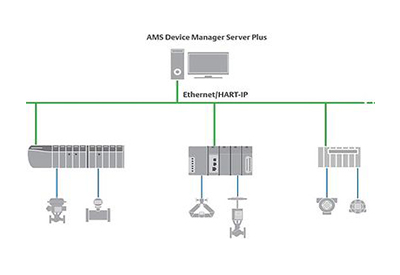Emerson Expands Asset Management Coverage for Faster Integration in Projects and Operations

Aug 15, 2019
Emerson has expanded AMS Device Manager with HART-IP support, making it easier to connect with devices and control systems and potentially eliminate hundreds of thousands of dollars in project hardware and engineering. AMS Device Manager is used by thousands of facilities across the globe to streamline installation of field devices during capital projects, increase safety system uptime, and quickly and safely test devices from the control room. By eliminating multiplexers, organizations can more easily use AMS Device Manager to configure, calibrate, validate, and document more of their HART-enabled field devices and systems.
Connecting field devices to asset management systems typically requires the use of multiplexers that significantly increase hardware costs and engineering hours during the project phase. According to FieldComm Group, more than 40 million field devices use HART, a protocol designed to allow intelligent devices to communicate with host systems. HART-IP—now native on AMS Device Manager—allows asset management systems to bypass complex and expensive multiplexers and directly access measurement and diagnostics information from HART-enabled field devices using existing plant Ethernet networking infrastructure.
The current interface has been tested for connectivity to Schneider Electric Triconex® Tricon CX safety systems, HIMA HIMax safety systems, and Phoenix Contact multiplexers. Emerson will continue to test and add new systems to the list of those officially supported by the interface.
“Asset management systems help integrate data between field devices and systems, making them useful for other on-prem or off-prem IIoT software and analytics. With better plant data integration, organizations can take an early, significant step to enable digital transformation,” said Mani Janardhanan, vice president of product management for Emerson’s Plantweb and reliability solutions.
Go HERE for more information

















